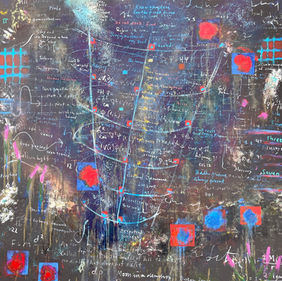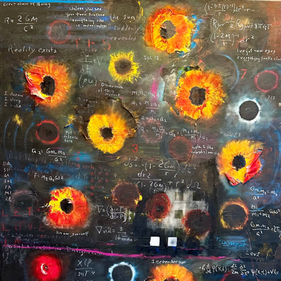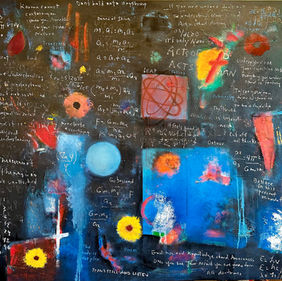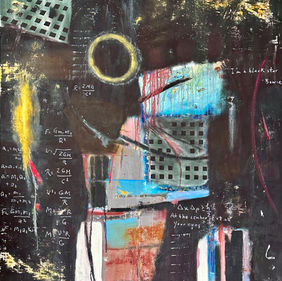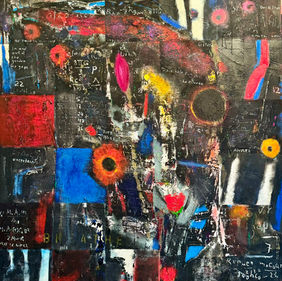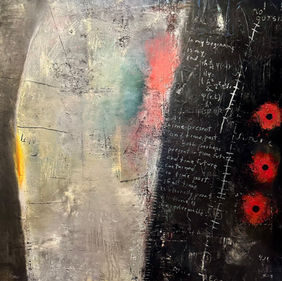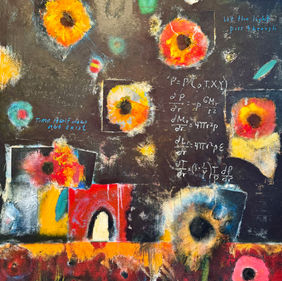When Can We Be Real
For almost as long as I can remember I would begin a painting by writing a poem on the canvas. Either original or something I had read, it didn’t matter because I was going to cover it up anyway. It was just a way to begin. Once the poem was there, I would have something to dialogue with, to dance with.
But I often felt that I wanted to use language as an element of my paintings, the way that you see calligraphy on Japanese woodblocks called ukiyo-e. In those pieces, the language, though indecipherable to me, seems like an integral, vital part of the image.
The question of how to use language, and what language, is something I thought about for well over a decade. Then, one day I was talking to a friend who had lived in Japan and she told me that the text in the ukiyo-e is often archaic and that modern Japanese people can’t read it. In that moment a bell went off in my head! I realized I could use language as a visual element and that people didn’t have to understand it, but they would be further rewarded by the piece if they did.
What I didn’t want to do was use language in a way which limited or too strictly directed the viewer. I wanted to use language to expand the experience. So I started experimenting.
Early on I used layers of text one on top of another, the way I would layer paint. That made for a visual experience that was really about words, both as linear text and superimposed hypertext. But I wanted to refine it more.
At some point I decided that I could actually use the things which interested me intellectually as content which I would juxtapose within an environment that enhanced and expanded the visual message of the painting. I began combining poetry, philosophy, spiritual texts and physics equations in an attempt to evolve a language which was both idiosyncratic and universal.
